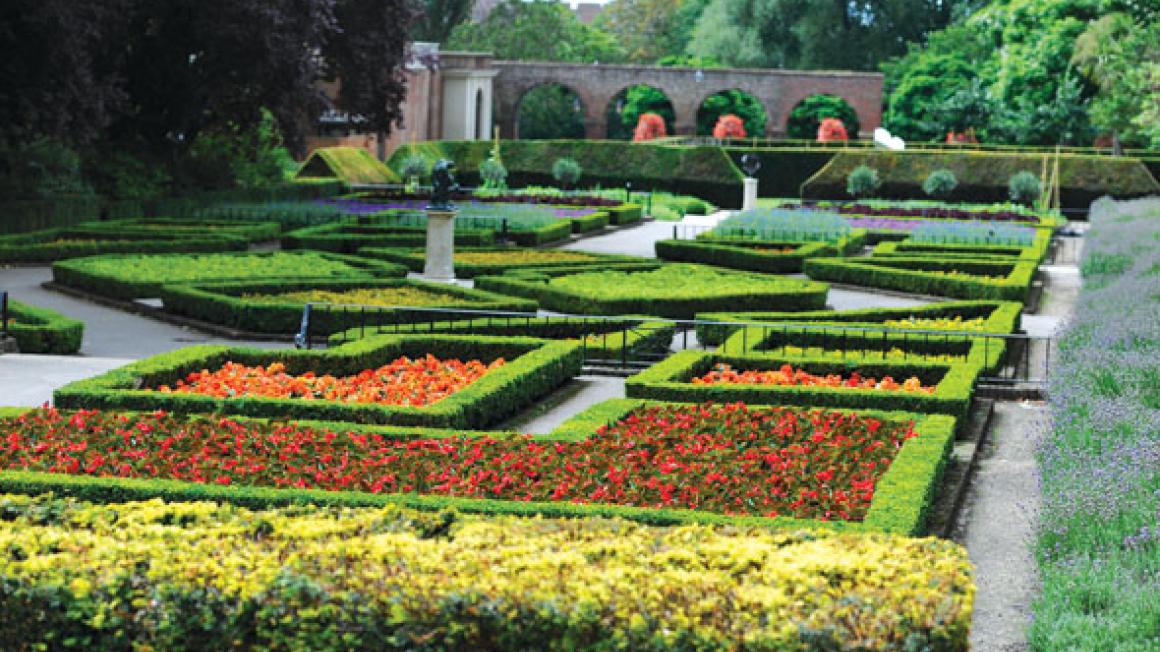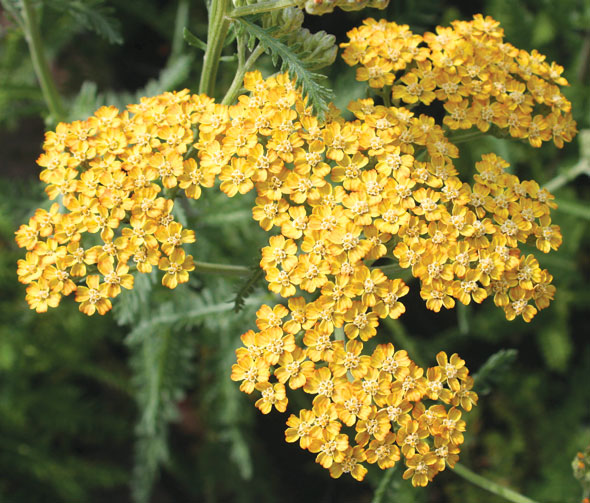Late summer sensations
We usually begin or end our visits with an inspection of the bedding-out displays nearby. Square in shape, with a wall on one side and a yew hedge opposite, the area is divided into formal beds edged with low box hedges. On a recent visit, these beds were filled with the tall white flower spikes of one of the perennials favoured by New Waveinspired garden designers, Veronicastrum virginicum ‘Album’. This striking plant is attractive in bud, in full flower and in ghostly mode when it has gone over. In the Holland Park display, the mass plantings were edged, within their box frames, by a narrow line of yellow zinnias, white echinaceas, and a sprinkling of French marigolds, Tagetes patula, to add spice. Another lovely Veronicastrum also comes to mind: V. virginicum ‘Fascination’. This has long spikes of tiny, rich lilac flowers and is loved by pollinators.
Our late summer borders have become much more interesting in recent times thanks to the fashion for prairie planting and the introduction of plants from North America. A growing desire for year-round interest in the garden has also had an influence. There is plenty of plant material to choose from, such as the popular coneflowers, the echinaceas – it was E. purpurea ‘White Swan’, I think, in that cool, late summery planting in Holland Park. Echinacea purpurea are the ones most widely grown, with pink or white flowers, but watch out for new hot reds and yellows from the plant breeders.
Salvias are also in vogue. They provide brilliant colour in autumn and attract large numbers of butterflies and bees. Salvia uliginosa (bog sage) is a tall, willowy plant that can grow to 2m and is perfect for the back of a sunny border. I first saw it in Kew Gardens and was bowled over by the piercing sky blue of its flowers. It is short-lived, in my experience, and benefits from a sheltered site and protection in winter. I can also recommend S. patens ‘Guanajuato’, which has intense blue flowers on long tresses.
Another of my blue-flowered favourites in the autumn border is Aster x frikartii ‘Mönch’, a wonderful plant that forms a wide mound covered in masses of large, lavender-blue flowers from July to October. It is resistant to mildew and a much better bet than the traditional Michaelmas daisies, the Aster novi-belgii hybrids (New York Aster) that one associates with neglected old gardens and blighted wasteland in towns and cities. Powdery mildew is endemic in these plants, and they are also invasive.
There are lots of alternatives. Aster amellus, for example (Italian starwort), is immune to mildew. ‘King George’ is an attractive cultivar, with dark green oval leaves and yellow-centred purple-blue flowers. It only grows to 60cm, so is perfect for the front of the border. It needs a well-draining spot and prefers an alkaline soil. And, finally, there’s A. divaricatus, which has dark green flower stems, and produces white, daisy-like flowers from June to October. Originally from North America, it was a favourite of Gertrude Jekyll, who planted it with bergenias. It’s great for a shady border.
Claire Austin Hardy Plants: 01686-670342, www.claireaustin-hardyplants.co.uk
Crocus: 0844-557 2233, www.crocus.co.uk

FLOWER SHOW SPECTACULAR
The RHS Wisley Flower Show and the National Dahlia Society are joining forces this year to offer a combined late-summer flower show at the RHS flagship garden at Wisley from 4 to 8 September 2013. The National Dahlia Society will have its own marquee, bringing together more than 100 of the best dahlia growers, and holding displays of decorative, cactus, semi-cactus and ball-flowered dahlias in every colour (except, of course, the so far elusive blue). There will also be 40 or so award-winning nurseries and tradestands, and the National Association of Flower Arrangement Societies (NAFAS) will be exhibiting in the Glasshouse Gallery. The late-summer borders will be looking spectacular, there’ll be a plant crêche for the serious shopper, plenty of places for refreshments, and for the most intrepid, the Surrey Sculpture Society Trail includes 60 sculptures, all for sale, by established and upand- coming artists from across the southeast.
0845-260 9000, www.rhs.org.uk/wisley



